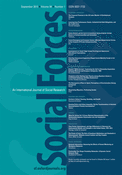-
Views
-
Cite
Cite
Michael Timberlake, Building Globalization: Transnational Architecture Production in Urban China By Xuefei Ren. University of Chicago Press. 2011. 218 pages. $30 paper, Social Forces, Volume 94, Issue 1, September 2015, Page e19, https://doi.org/10.1093/sf/sot059
Close - Share Icon Share
Extract
Two years ago I stood on the edge of a several-hectares-long field of brick-and-mortar rubble in an area of the Haidian District of Beijing known as Tangjialing Lu. Yellow bulldozers and backhoes were knocking over the last few buildings in the northwestern corner of the plot that, I was told, only six weeks earlier had housed more than 50,000 residents, many of them students and/or migrants—members of the “ant tribe,” without household registration, who were forced to move even farther away from their schools or jobs. China's rapid transition from a command economy to an essentially capitalist market economy in less than a generation has revolutionized social relations and radically transformed the landscape of the country's cities as they have grown more numerous, more populous, taller, more geographically dispersed, more splendid, more global, and more polarized. Xuefei Ren develops an analysis of the production of architecture and architectural practices in modern China as a lens through which to understand these multiple transformations, developing the argument that global models of modernity (perhaps postmodernity) have crystalized imperfectly in the skylines and built ecologies of aspiring global cities, most particularly Beijing and Shanghai. She shows that this has been the result of the actions of a strong developmentalist nation-state and nearly equally imposing place-making and revenue-hungry local governments, both eager for international recognition, acting on and in a kind of dissonant consort with an emerging real-estate market and transnational architectural firms eager to do business in the world's most dynamic construction economy.



